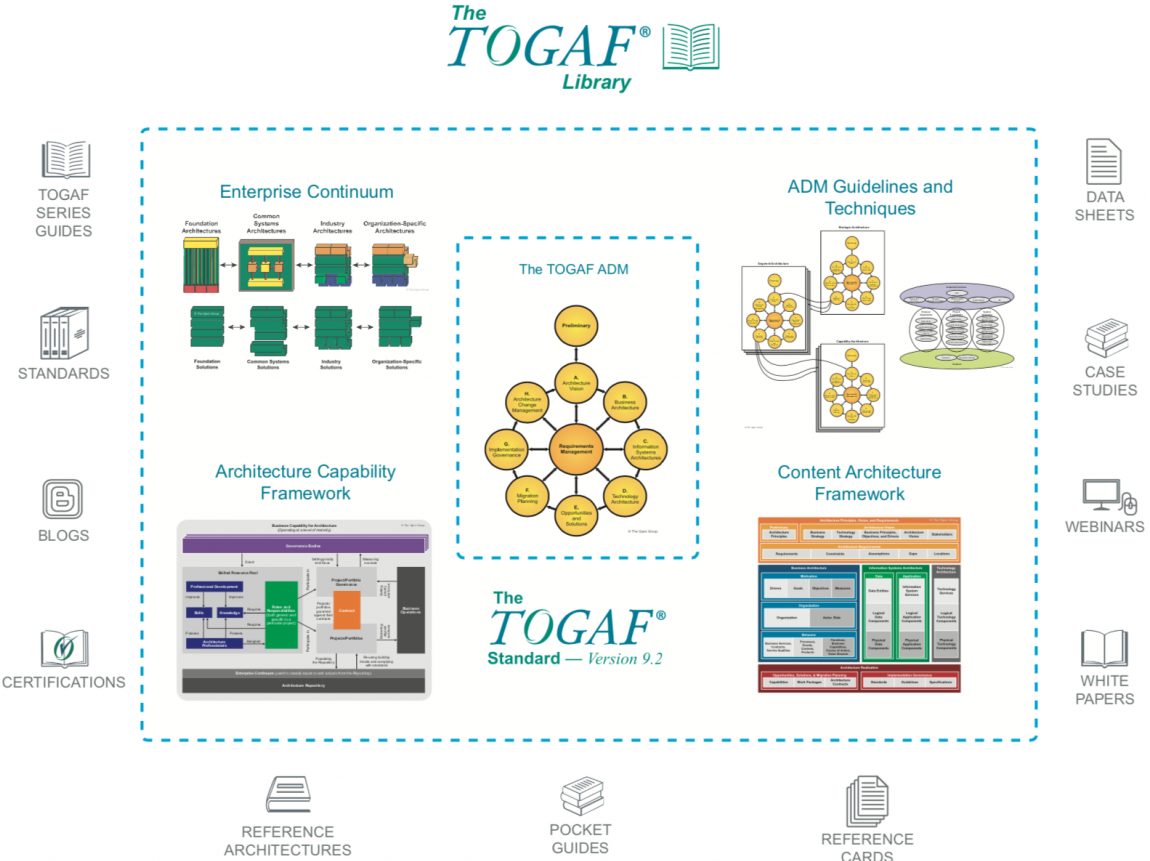The TOGAF Standard, a standard of The Open Group, is a proven Enterprise Architecture methodology and framework used by the world’s leading organizations to improve business efficiency and is supported by a set of documents that provide specific guidance about how to use and adapt it to support new trends. This set of documents resides in the TOGAF Library and represents an extensive new body of knowledge that Enterprise Architecture practitioners can use to support the development of Enterprise Architectures.

As part of the evolution of the TOGAF standard, The Open Group released an update to the standard in April 2018. The TOGAF Standard, Version 9.2 has been redesigned and restructured into a smaller publication that includes separate guides. The core of the TOGAF standard remains the same in the new version, but it now includes more on Business Architecture, Security Architecture, mappings to other industry reference models, and practical implementation guides. There is also more focus on digital trends and business transformation beyond IT.
The TOGAF Standard, Version 9.2 provides:
The key enhancements made in this version include updates to the Business Architecture and the Content Metamodel. All of these changes make the TOGAF framework easier to use and maintain. It retains the major features and structure of the TOGAF 9.1 standard including:
Modular Structure: The TOGAF standard has a modular structure. The modular structure supports:
Content Framework: The TOGAF standard includes a content framework to drive greater consistency in the outputs that are created when following the Architecture Development Method (ADM). The TOGAF content framework provides a detailed model of architectural work products.
Extended Guidance: The TOGAF standard features an extended set of concepts and guidelines to support the establishment of an integrated hierarchy of architectures being developed by teams within larger organizations that operate within an overarching architectural governance model.
In particular, the following concepts are included:
Architectural Styles: The TOGAF standard is designed to be flexible and it can be used with various architectural styles. Examples are provided both in the TOGAF standard, in Part III: ADM Guidelines & Techniques, and the TOGAF Library. Together these comprise a set of supporting materials that show in detail how the ADM can be applied to specific situations; for example:
The TOGAF Series Guides contain guidance on how to use the TOGAF framework. The TOGAF® Series Guides are expected to be the most rapidly developing part of the TOGAF document set. While the TOGAF framework is expected to be longlived and stable, guidance on the use of the TOGAF framework can be industry, architectural style, purpose, and problem-specific.
It is supported by the following Series Guides: